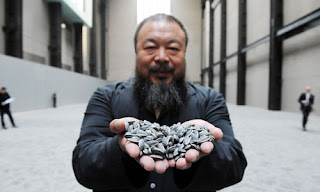 |
| Labyrinth [http://adsoftheworld.com/files/ images/skodaLabyrinth.jpg] |
 |
| Theseus Minotaur Ramey Tuileries [http://upload.wikimedia.org/wikipedia/commons/ 9/9b/Theseus_Minotaur_Ramey_Tuileries.jpg] |
Generally, Labyrinth also known as maze. There are many Labyrinth in the ancient times which have functions of their own. Modern Labyrinth involves in architecture and entertainment. The idea of Labyrinth had influence the designs of buildings as well. For example the Labyrinth on floor of Grace Cathedral in San Francisco and Labyrinth on the Chartres Cathedral's floor.
 |
| Labyrinth on floor of Grace Cathedral in San Francisco [http://upload.wikimedia.org/wikipedia/ commons/f/f5/Labyrinth.JPG] |
 |
| Labyrinth on the Chartres Cathedral's floor [http://upload.wikimedia.org/wikipedia/commons/6/ 68/Labyrinth_at_Chartres_Cathedral.JPG] |
The photos above shows that Christian's building in the ancient time have influence of the idea of Labyrinth. Besides that, Labyrinth also serve symbolism. Labyrinth has many cultural meanings during the ancient times. Prehistoric Labyrinth are known as traps for malevolent spirits. In medieval tines, Labyrinth symbolized a hard path to God and birth.
Some examples of Labyrinth as ideas in buildings, designs, games and movies.
 |
| Labyrinth in landscaping [http://www.angelobell.com/wordpress/ wp-content/uploads/labyrinth3.jpg] |
 |
| Labyrinth in the Pacman Game [http://www.kawaiikakkoiisugoi.com/wp-content/ uploads/2011/03/pacman-screen.jpg] |
 |
| Idea of Labyrinth in the Zuma Deluxe game [http://xbox360media.ign.com/xbox360/image/article/ 678/678831/zuma-20060104035256588.jpg] |
 |
| Labyrinth in the movie "Pan's Labyrinth" in 2006 [http://cf1.imgobject.com/backdrops/553/4be12ce4017a3c35b9000553/ el-laberinto-del-fauno-original.jpg] |
 |
| Print Screen of Japanese Anime "Naruto Shippuden" from You Tube. A closed Labyrinth as Orochimaru's lair. [http://www.youtube.com/watch?v=UobwqYgCXrI] |
Reference:
Labyrinth. (n.d.). Retrieved 24 August, 2011, from Wikipedia: http://en.wikipedia.org/wiki/Labyrinth




















